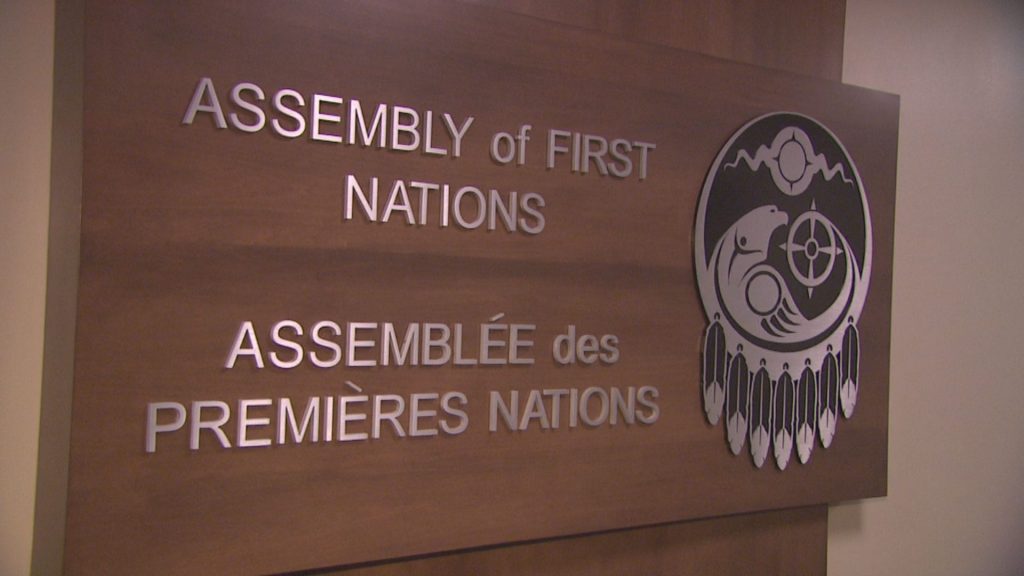
The AFN advocates on behalf of 634 First Nations at the national level, and receives millions annually in funding from the federal government. Photo: APTN
The Assembly of First Nations’ former director of human resources is suing the national advocacy organization for wrongful dismissal, court documents show.
Robin Henry seeks $200,000 in damages after he alleges he was terminated without cause on May 5, according to a statement of claim filed in Ontario Superior Court on June 23.
Henry, 72, says in the claim he became AFN’s HR director, “which is a skilled, essential, and technical role in nature,” on May 17, 2021.
But less than a year later, he alleges AFN terminated his employment without cause and without notice, giving him a payout equal to two weeks’ salary instead. He claims it amounts to wrongful dismissal.
No defence was filed when APTN consulted the court registry. Henry’s lawyer did not respond to an interview request. The AFN did not respond to a request for comment.
Henry is the second ex-employee to commence a labour lawsuit against the AFN in less than two years.
Former communications officer Gail Boyd sued the AFN for $90,877 on Dec. 2, 2020, similarly alleging wrongful dismissal.
AFN eliminated her position and terminated her without notice on Oct. 13, 2020, offering her a payout of 12 weeks’ salary in lieu of notice, according to Boyd’s statement of claim.
The AFN, represented by law firm Fasken Martineau Dumoulin, denied this constituted wrongful dismissal, arguing in a statement of defence the termination was legal and the severance package reasonable.
The case was dismissed on consent in June 2021 with no details immediately available explaining why.

Two other former employees told APTN News the AFN has been struggling with high turnover, resignations and heavy workloads in its operational wings like finance, communications, human resources and senior management.
Both sources attributed the difficulties to “toxicity,” a lack of policy and procedure, and a lack of work-life balance. They asked not to be named citing concerns about career ramifications.
“They know we’re overwhelmed. We’ve told them that we need more help. There’s not much more that employees can do,” said the first former employee, describing work conditions inside AFN. “And it was very toxic. I couldn’t handle it anymore, so I left.”
“Morally, I was challenged by a lot of the things that I saw happen to people. I knew that I was not safe from that treatment either,” the second ex-staffer said. “It was like kind of counting the days. When will I be the one that they’re treating this way? It seemed like nobody was safe from being the pick of the week.
“When you watch people be mistreated, and you watch their claims for overtime be denied, and you watch them be terminated for no reason — and asking for a reason being and told, ‘Because,’ like they didn’t actually get a reason — when you watch all these things happen to people, it becomes fearful for you that it could be you next.”
The AFN advocates nationally on behalf of First Nations but has struggled with well-documented credibility and relevancy issues among grassroots people for years. It receives tens of millions of dollars in public money every year from the federal government.
Chiefs elect the AFN executive committee that consists of the national chief and regional chiefs, and delegate the executive a lobbying mandate during assemblies.
The organization’s administrative side is known as the AFN Secretariat, which is federally incorporated as the National Indian Brotherhood. The AFN is also supposed to have an oversight organ known as the Confederacy of Nations, but it’s currently defunct.
Over the past 18 months, the organization has been rocked by string of external probes, harassment allegations, leaks, reports of a toxic environment, accusations of corruption and calls for external investigations.
The troubles boiled over in June when the executive ordered a third-party probe into workplace misconduct allegations against National Chief RoseAnne Archibald, who they then tried to suspend after she accused the organization of “corruption and collusion” in response.
No allegations have been proven. The HR probe continues behind the scenes while First Nations chiefs approved a review of AFN finances during the annual general assembly earlier this month.
Read more:
National chief alleges AFN hid $191K transfer to employee’s bank account
National chief says AFN encased in colonial ‘patriarchal structure’ that guarantees toxicity
Prior to the assembly, Archibald circulated a list of AFN contractors to the chiefs as part of a confidential briefing package compiled to support her push for a forensic audit of AFN’s fiscal management over the last eight years.
The package included a chronology of events along with supporting evidence, including emails and one briefing note that revealed details of a reported financial “irregularity.”
The briefing note said an employee who resigned their role received a nearly $200,000 “retiring allowance,” and then signed a new contract to keep working part time.
The AFN neither confirmed nor denied the authenticity of the documents, which APTN obtained after they were circulated to chiefs. A source with direct knowledge of AFN’s contracting practices said the list paints an accurate picture of AFN operations.
The list indicates AFN spent millions on outside consultants, policy analysts, advisers and lawyers who worked for the organization as contractors over the last two years.
Meanwhile, the two ex-employees who spoke with APTN said AFN’s operational sectors and senior ranks dealt with high turnover resulting in staffing issues and overworked employees in those departments.
“All of the teams on the operations side were struggling. Our finance team, they were always overwhelmed,” said the second former employee. “We saw that the turnover was mostly in operations and senior leadership.”










